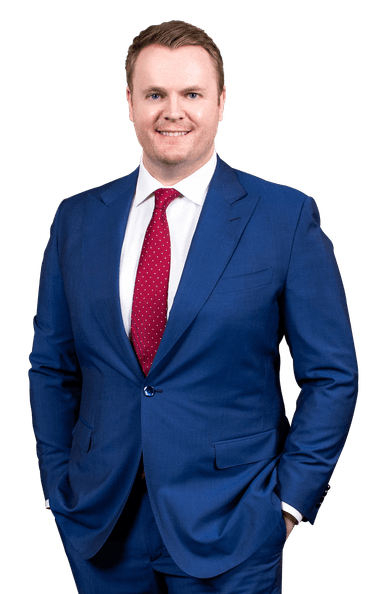

Drew Gilliland · Dan Kramer
Allison v. Sorrell - $218,400 Auto/Spine Injury Verdict - Drew Gilliland and Dan Kramer
![]() June 29, 2022 ||TLU n Demand
June 29, 2022 ||TLU n Demand
This case arose from a failure to yield in Douglas County, Georgia, on July 30, 2018. Plaintiff was driving straight, and the defendant was at a stop sign. The defendant pulled out in front of Plaintiff to turn left. The defendant was perpendicular to the plaintiff and was located to the plaintiff’s right when she pulled out from her stop sign. The plaintiff tried to avoid the crash by swerving to the right, but he did not have enough time to react, and they crashed. Both cars were totaled.
The defendant disputed liability because she, the defendant, said that the plaintiff was speeding and coming over a hill and therefore the defendant could not see the plaintiff after she, the defendant, looked left then right before turning left. The defendant did not look to her left again before she turned even though she knew a hill was to her left. The jury apportioned 30% fault to the plaintiff.
The plaintiff went to the emergency room the day after the wreck. He complained of arm, neck, and back pain. His x-rays were normal, and he was diagnosed with strains and a contusion on his arm from where the airbag hit him. His hospital bill was $12,000. About a week later, he went to a chiropractor. The chiropractor treated the plaintiff for four months and performed numerous orthopedic tests on the plaintiff. The chiropractor’s bill was $8,000.
The chiropractor performed many orthopedic tests and three of those tests showed that the plaintiff, more likely than not, had a disc herniation and nerve root impingement in his lower back. The plaintiff’s pain in his upper back and neck resolved with chiropractic care. The chiropractor never ordered an MRI to confirm that the plaintiff had disc herniations and nerve root impingement. Plaintiff’s low back pain was still present on the day of trial. The plaintiff stopped medical treatment because he was raising three kids (all on honor roll) and he was working an hourly job, so the plaintiff did not get paid when he missed work for doctor appointments.
We asked for $312,000 during closing and the jury awarded that amount, but because they assigned 30% fault to the plaintiff, the final verdict was $218,400. Allstate’s highest offer was $10,000 and they withdrew that offer on the Friday before trial at 5 pm. We begged Allstate to settle this case for $35,000, and we sent an offer of judgment for $35,000. In Georgia, if you beat your offer of judgment by 125%, then you get to collect attorney fees. We beat our offer of judgment by a wide margin. We are in the process of submitting our motion for attorney fees and we expect the final judgment to be more than $218,400 after our attorney fees and expenses of litigation are added to the final judgment.
Teaching Points:
Because we didn’t have an MRI, we proved our client had a disc herniation and nerve root impingement by all the orthopedic tests the chiropractor performed.
Chiropractor had never testified before, but he had an interesting story: he got into chiropractic medicine because he broke his neck twice when he was racing BMXs. Chiropractors helped him get better, so he stopped racing and became a chiropractor. Learning why your experts got into their line of work can be very helpful because, if the expert has a good story to tell, a jury will probably like your expert more. I not only want the jury to like the plaintiff but also our experts. Although I don’t have any peer-reviewed studies to support this theory, but I truly believe that likeability and credibility are linked.
Defense attorneys can’t help themselves when it comes to chiropractors: they hate chiropractors and look down on chiropractors. This defense attorney kept calling Dr. Warren Smith, “Chiropractor Smith.” We knew the defense attorney was going to diminish the chiropractor because he wasn’t a medical doctor, so we came up with funny responses to potential questions on cross. Dr. Smith was a funny guy and this part came easy to him. At one point, Dr. Smith responded told the defense attorney that the medical profession kills about 180,000 people per year whereas chiropractors kill zero people per year.
We used a lot of visuals and demonstratives. We also had a model spine for the chiropractor to use when talking to the jury.
For jury selection especially, and for trial in general, my goal was to make the jury feel welcome and to create a light atmosphere. A few of the jurors complimented me after the trial and thanked me for keeping things light. For example, in jury selection, I asked the jurors if any of them had the “misfortune to be related to an attorney?” The jurors laughed at this. I broke the ice with the jury by asking if any of them “got really excited when they received their jury summons.” I’m not trying to be a standup comedian, but I try not take myself seriously. I try to approach jurors as friends who want to do the right thing. I also kept jury selection short. It only took 2 hours for us to pick a jury. The foreman was the manager of a gun manufacturing company, which I didn’t know until the trial was over.
We called the defendant on cross exam as our first witness in our case-in-chief. We knew the defendant was going to testify that the client was 100% at fault. So, I asked questions containing facts that showed the defendant was actually at fault for the wreck. The defendant had to admit each of these facts because she did so at her deposition. I followed up these questions by asking, “You still believe the plaintiff is 100% at fault for the wreck, correct?” The defendant had to maintain that extreme position and I believe she lost credibility by saying that the plaintiff was 100% at fault for the wreck.
Our chiropractor talked about our client’s spinal x-rays. He talked about how the client’s spine appeared out of alignment (he said, “bent”). We did not have the actual x-ray images to show to the jury. The chiropractor was just testifying based on memory. But because the jury liked the chiropractor, I am wondering if the actual x-ray images were irrelevant to the jury. In other words, if the jury likes a witness, does that witness’s testimony become more persuasive or important than the actual evidence that their testimony is describing?
If you can't attend Live, Watch On Demand